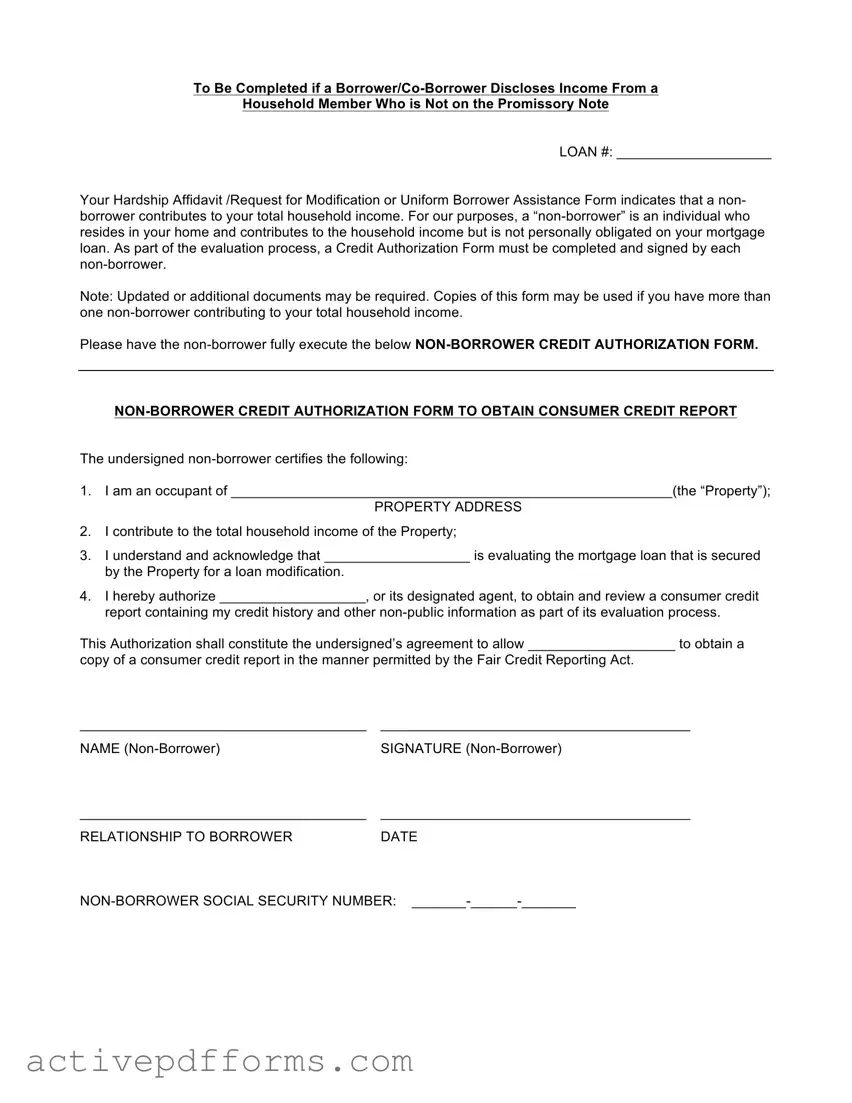
To Be Completed if a Borrower/Co-Borrower Discloses Income From a
Household Member Who is Not on the Promissory Note
LOAN #: ____________________
Your Hardship Affidavit /Request for Modification or Uniform Borrower Assistance Form indicates that a non- borrower contributes to your total household income. For our purposes, a “non-borrower” is an individual who resides in your home and contributes to the household income but is not personally obligated on your mortgage loan. As part of the evaluation process, a Credit Authorization Form must be completed and signed by each non-borrower.
Note: Updated or additional documents may be required. Copies of this form may be used if you have more than one non-borrower contributing to your total household income.
Please have the non-borrower fully execute the below NON-BORROWER CREDIT AUTHORIZATION FORM.
NON-BORROWER CREDIT AUTHORIZATION FORM TO OBTAIN CONSUMER CREDIT REPORT
The undersigned non-borrower certifies the following:
1.I am an occupant of _________________________________________________________(the “Property”);
PROPERTY ADDRESS
2.I contribute to the total household income of the Property;
3.I understand and acknowledge that ___________________ is evaluating the mortgage loan that is secured by the Property for a loan modification.
4.I hereby authorize ___________________, or its designated agent, to obtain and review a consumer credit report containing my credit history and other non-public information as part of its evaluation process.
This Authorization shall constitute the undersigned’s agreement to allow ___________________ to obtain a
copy of a consumer credit report in the manner permitted by the Fair Credit Reporting Act.
_____________________________________ |
________________________________________ |
NAME (Non-Borrower) |
SIGNATURE (Non-Borrower) |
_____________________________________ |
________________________________________ |
RELATIONSHIP TO BORROWER |
DATE |
NON-BORROWER SOCIAL SECURITY NUMBER: _______-______-_______

